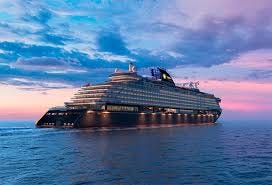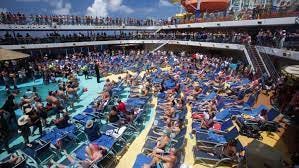Forget a relationship. Why is a good physical therapist so hard to find? A "Non-Cruiser" asks, "What's the big deal?"
Physical therapy plays a crucial role in restoring mobility, reducing pain, and enhancing the quality of life for countless individuals. However, in today's medical landscape, finding a physical therapist can often be a challenging and frustrating endeavor. As one who was diagnosed with spinal stenosis in 2019 after 44 years of running, I've experienced this difficulty for the last four years.
My most recent visit was to Medstar Rehabilitation Hospital at the Washington Hospital Center. The first obstacle was that I had to wait six weeks for my initial appointment because they wanted me to be seen by the "right" specialist. Meanwhile, I depended on my army of Youtube specialists to guide me through an array of exercises for my back. While much of the information obtained on that platform has been good, oftentimes it is contradictory so it’s easy to come away more confused than healed.
The day of my appointment finally came. From the time I entered the facility until I left, I encountered a situation of semi-organized chaos. Although I had registered in advance, I had to deal with the paperwork again because the intake clerk couldn't find me in the system. After getting back on track, I was introduced to a young man named Cyrus who would serve as my therapist. He guided me back to a giant space where there had to be more than 50 tables with patients on top of them receiving treatment. Interestingly, the overwhelming majority were African American, but that's another story for another day.
To evaluate my condition, Cyrus guided me through a series of exercises, many I had already done as a result of visits to other therapists and my Youtube medical team. But what really struck me was that I was a total picture of health based on the situations that others in the room were confronting. For whatever reason, a feeling of guilt overcame me because I felt that I was taking up time and space that someone else with worse conditions could be utilizing.
After returning home, I concluded that it wasn't worth the time or effort to travel to Medstar for a 30 to 40-minute appointment doing exercises that I was already doing at home. After an email exchange with Cyrus, he agreed. I knew what I needed, Contrast Therapy which combines hot and cold treatment massage. However, I've had little luck finding a physical therapist who practices this type of rehab. Of the three that I did find, insurance was the issue.
As a result of conversations with various therapists and some research of my own, there are several reasons behind the difficulties faced when seeking physical therapy services in today's medical environment.
1. Growing Demand and Aging Population:
As our nation's population ages, there is a higher prevalence of chronic conditions, injuries, and surgeries that require rehab. Consequently, the demand for physical therapy has skyrocketed, placing a strain on the available resources. Unfortunately, the supply of physical therapists has struggled to keep pace with this surge in demand, which has created shortages in available labor.
2. Limited Educational Resources:
I did not realize that becoming a physical therapist is such a rigorous pursuit, requiring years of education and specialized training. Physical therapists must complete a bachelor's degree followed by a doctoral degree program in physical therapy or you might choose a 3+3 physical therapy program that combines the degrees into a total of six years of higher education. After obtaining those achievements, therapists will often have to undergo additional certifications or specializations to meet the diverse needs of patients. Adding to the problem is the limited availability of educational resources, faculty, and clinical placements.
3. Geographic Disparities:
Another issue impacting access to physical therapists is the geographical distribution of healthcare professionals. In some regions, particularly rural areas and underserved communities, the shortage of physical therapists is particularly acute. The uneven distribution is a result of various factors, including limited job opportunities, lower reimbursement rates, and lifestyle preferences among professionals. This creates a stark divide, leaving many individuals without accessible physical therapy services.
4. Insurance and Reimbursement Challenges:
Insurance coverage and reimbursement policies can significantly influence the availability of physical therapy services. Many insurance plans have limited coverage for rehabilitation services, imposing strict limitations on the number of sessions or placing excessive administrative burdens on practitioners. These factors may deter physical therapists from accepting certain insurance plans or discourage them from practicing altogether.
5. High Burnout Rates and Workforce Shortages:
Physical therapy can be physically and emotionally demanding, often requiring therapists to work long hours and treat multiple patients simultaneously. These demanding work conditions contribute to high burnout rates within the profession. Combined with the limited supply of physical therapists, this leads to workforce shortages, reducing the availability of practitioners even further leading to a cycle of burnout and exacerbating the scarcity of professionals.
My experiences in trying to find a physical therapist that will meet my needs in today's medical environment have become a challenging and time-consuming task. I do not doubt that the factors that I mentioned earlier and others that weren't discussed are the impediments to us as patients receiving effective physical therapy.
A Non-Cruiser asks, What’s the big deal?
They say there are certain kinds of travelers, those who love cruises and those who hate them. Count me in the latter. I will admit at the outset that I’ve never been on a cruise and have vowed never to go on one. However, I’m sure I will be asked if I’ve never been on a cruise, how could I hate them? Easy, as a germaphobe I don’t want to be confined in a boat in the middle of the ocean with a mini horde of people who I don’t know. I know, one can point out examples of mass congregations that are part of our everyday lives, conferences and meetings, musical festivals, and sporting events. But these occurrences tend to be singular and I can leave at my discretion.
The other thing is that I love prowling cities and select rural areas. I also like the idea of getting on a plane and arriving at my destination in hours, allowing me to enjoy the location and all it has to offer. The other reason for me to avoid cruises is that my leisure time is just that, leisure time. No schedules, I can eat what I like in a venue that offers an opportunity to indulge in other cultures. Now I know that it can be argued that cruise lines have become more creative in terms of activities and cuisines, but the way I see it, those still occur in the middle of the ocean. So decided to take as an objective look as possible into cruises and here’s what I found.
I will concede that one of the biggest advantages of vacation cruises is the convenience they offer. Most cruise packages include accommodations, meals, entertainment, and access to various amenities—all conveniently bundled into one price. This all-inclusive nature eliminates the need for constant budgeting and allows you to relax and enjoy the trip without worrying about expenses.
Cruises also offer the opportunity to explore multiple destinations in a single trip. Whether you're yearning for pristine beaches, vibrant cities, or cultural landmarks, cruises often feature diverse itineraries with stops at different ports of call. This variety allows travelers to experience the beauty and uniqueness of several destinations without the hassle of planning separate trips.
Cruise ships are known for their vast array of onboard activities and entertainment options. From swimming pools and spas to casinos and theaters, there's something for everyone. Passengers can indulge in live performances, comedy shows, cooking classes, or even rock climbing—all without leaving the ship. This abundance of entertainment ensures that there's never a dull moment on a vacation cruise.
The cruise industry also touts that they do a great job in catering to families by offering a host of kid-friendly amenities and activities. Many ships have been configured to offer children's clubs, water parks, and supervised programs to keep the little ones engaged while parents relax. The industry believes that creating a family-friendly atmosphere on cruises makes them an ideal choice for multigenerational vacations, ensuring that every member of the family can enjoy their time together.
So let's look at what I consider the view that I share with many, the cons. First, while cruises allow you to explore multiple destinations, the time spent at each port is often limited. This can be frustrating for travelers who wish to immerse themselves in a particular location or experience its culture in depth. The brief stopovers may not provide sufficient time to fully explore and appreciate the local attractions, leaving some with a sense of rushed sightseeing.
Further, cruise ships accommodate thousands of passengers, and this can lead to crowded common areas, especially during peak travel seasons. The pool decks, dining areas, and entertainment venues may become crowded, making it challenging to find a peaceful spot for relaxation, let alone exposing yourself to a group of strangers whose personal hygiene habits could be questionable. If you prefer solitude and serenity, the bustling nature of cruise ships may not be the ideal setting.
In addition, for those prone to motion sickness, the constant movement of a cruise ship can be a significant drawback. Although modern ships are equipped with stabilizers to minimize rocking, some individuals may still experience discomfort or nausea. It's important to consider your susceptibility to motion sickness before embarking on a cruise to ensure a pleasant experience.
Additional costs are another concern. While the upfront cost of a cruise may seem all-inclusive, there are often supplemental expenses that can quickly mount up. These expenses may include gratuities, alcoholic beverages, specialty dining options, shore excursions, and spa treatments. These extras can significantly increase the overall cost of your vacation cruise. It's essential to factor in these potential additional expenses when budgeting for your trip to avoid any financial surprises.
One of my biggest criticisms of Cruises is that itineraries are typically pre-planned, and once you're onboard, you have limited control over your schedule. The ship's departure and arrival times, as well as the duration of port stops, are predetermined. This lack of flexibility can be a nonstarter for travelers who, like me prefer to have more control over their daily activities and explore destinations at their own pace.
Finally, the industry has faced criticism for its impact on the environment. These massive vessels consume large amounts of fuel, resulting in air and water pollution. Additionally, waste management and disposal practices can be a concern. It's important to consider the environmental implications of cruising and choose companies that prioritize sustainability and responsible tourism practices.
Adding to all of the aforementioned negatives is the spread of viruses on ships and the physical melees that have occurred on several cruises. Just this week the Washington Post reported that the mid-May tally of gastrointestinal illness has "already exceeded the total number of outbreaks reported in 2019 and tied for the yearly number for both 2017 and 2018." As far as the fights on select cruises are concerned, the mixture of stupid with alcohol, unfortunately, can't be fixed.
Please keep in mind, I'm not throwin' shade at anyone who finds cruises enjoyable and in many cases exhilarating. But they just aren't my thing. The drawbacks of cruising far outweigh the benefits in my mind. But you tell me. Leave a comment below or a Note on Substack and let me know your view. In the meantime, cruise on.







